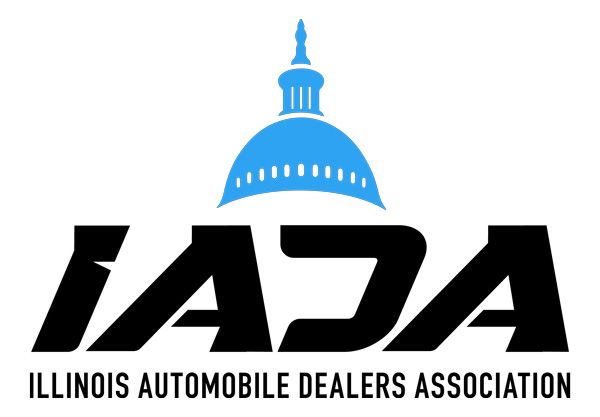Unemployment in August 2020 was high: according to Statistica, 13.54 million people were looking for jobs. August 2021 was better because by then, Statistica only listed 8.38 million unemployed people.
With such large numbers, it’s easy to think there is no shortage of people to hire, but the pandemic recession hasn’t changed the need to find, train and retain new workers. The shutdown worsened everything because many workers who lost their jobs, especially people with extensive work experience, decided to retire or change industries. Unemployment statistics don’t count the people who retired.
Every company deals with turnover sometimes, but Harvard Business Review blames bad hiring decisions for 80% of turnover. As a result, the first step in retaining employees is figuring out what you have done wrong in the past so you can fix it.
One of the most important things you can do to retain employees is to diversify your search and make sure you hire the right people in the first place. According to employment industry experts, you can counteract bias by considering people from under-represented backgrounds. To prevent hiring the wrong people, look at their soft skills as well as their other qualifications. Approximately 89% of the time, the hiring process goes wrong because of a soft-skills mismatch.
The employee shortage doesn’t mean you won’t find people to hire, but the process might be more challenging than you would like, and it makes sense to encourage employees to stay as long as possible. Investing in your workforce will benefit your company during good times and bad. When your company is prospering and everything is going well, making it clear how much you value your employees encourages them to build a career with you. Downturns are an opportunity to build loyalty, too; people don’t forget it when they know you could have cut their job and didn’t.
At the same time, one of your jobs is to determine which employees are valuable and whether any employees drain the organization. If you can help someone become more productive, that’s great. But if you don’t succeed, you are doing them and the company a favor by letting them find a better job somewhere else.
Educators can play a much larger role in teaching students about the opportunities available to them. Companies should make a point of doing what colleges do and start visiting high schools two or three times a year. If the only message students get is that they ought to go to college, it’s a no-brainer what they are likely to do after getting their high school diploma. Auto industry jobs ought to be a compelling alternative to a four-year degree with a fat price tag attached. Is a college education important? Yes, absolutely. But everyone’s situation is different, and a college education does not always pass the test when you consider the return on investment.
What else can companies do to educate people about career opportunities? Look at television, online news sites and social media. Target the most likely media to reach people; for example, if you want to reach a younger audience, such as Generation Z (1997-2012), look at Instagram, Snapchat and TikTok.
What are some ways you can keep employees committed to their work?
- Keep your efforts at retention in perspective. Employee engagement is determined by personality more than any engagement initiatives you might come up with. The right hires are more likely to be engaged and stay because of who they are, not what you do in terms of programs.
- Even so, skilled workers are hard to find, so value the employees you already have. Treat them right, and they will probably be happy in their jobs.
- Show active appreciation for the work being done.
- Be considerate about schedules and work with employees as much as possible. People need to know as soon as possible when they will have a day off, and if you ask them to work a difficult shift, they will appreciate knowing they won’t be stuck there forever.
- Give new employees some time to acclimate to the work they’ll be doing. For the first week or two, educate new employees and have them meet with people to get acquainted. This introductory time gives you a chance to educate them about expectations and help them be invested in what they will be doing from the very beginning.
- Check up on new hires regularly after start working. For example, see how they are doing after 30, 60 and 90 days. Ask them whether they are getting enough training. Make sure their benefits have been set up correctly. Schedule regular training sessions about industry trends and equipment, too, so employees stay current. Ensure they know about any career-growth opportunities you offer.
- Invest in leadership education for supervisors a minimum of once a year.
- Where possible, offer preventive mental health training and support. People have always had problems with mental health issues, but the pandemic has been hard on everyone. It’s past time to get rid of the stigma around mental health care. Suppose you can provide benefits that give managers and team members the skills to improve their emotional prosperity and a way to get help when those skills aren’t enough. Your employees will be more effective in their jobs, more likely to stay and less likely to incur medical costs.
- Track what you are doing so you can figure out whether your ideas work or not. Continuous improvement won’t occur unless you pay attention to the process.
Even though the obvious solution for a workforce shortage is to recruit more people, retention still matters. As a result, companies with a healthy, positive work environment have a definite advantage over less-savvy competitors because constant turnover is expensive. (How expensive? There are online calculators to help you figure that out.)
If you compare companies with higher employee engagement against companies that don’t, some experts say there’s a 20% difference in productivity
How big a difference does employee engagement make? If you compare companies with higher employee engagement against companies that don’t, some experts say there’s a 20% difference in productivity. Engaged employees are more proactive than their less-motivated counterparts when it comes to solving problems. They don’t spend the day watching the clock and putting in minimum effort.
That said, you are going to expect more turnover in some jobs than others. That’s why turnover can’t be the only consideration. You should also consider job difficulty and the amount of interaction a job requires. If a job can be done by 50%-75% of all applicants, focus on retention. Performance-related criteria become more important if a job can only be done by a much smaller percentage, like 1%-5%. And if the job requires a great deal of interaction with other people, think about whether potential employees are a good fit for the company’s culture. What does a “good fit” consist of? It’s pretty simple: don’t hire someone with negative personality traits to manage large groups of people. Since that can be hard to determine, consider using a company that specializes in screening potential employees. Someone may be exceptionally well-qualified but unpleasant to work with; if they can work fairly independently most of the time, without coming into a lot of contact with others, you can probably hire them and get away with it. Some skills are so valuable they make dealing with personality problems worthwhile. But all things being otherwise equal, always opt for the person who has better interpersonal skills.
Many problems are outside your control, but you can create a good workplace environment. Take advantage of that fact. Your dealership will be much more likely to thrive if you do.











